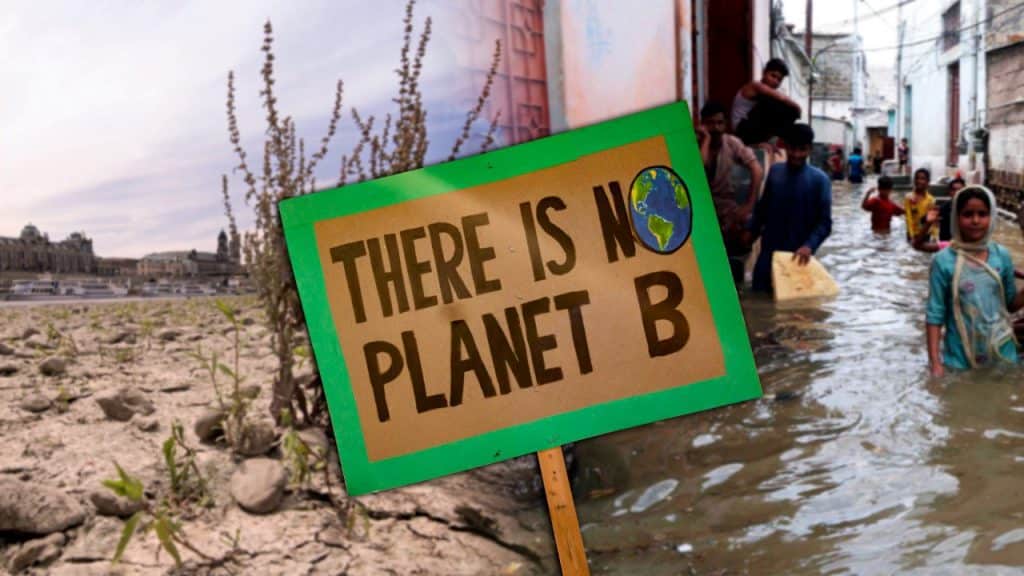
The summer of 2022 showed climate change amplifies seemingly contradictory effects, worsening drought while also dramatically increasing the risks of extreme precipitation events. In addition to drying out soil, increased evaporation rates due to higher temperatures result in higher levels of atmospheric moisture.
Rising global temperatures caused by the burning of fossil fuels made this summer’s brutal droughts across the Northern Hemisphere — which dried up rivers, sparked unprecedented wildfires, and led to widespread crop failure — 20 times more likely, according to a new study.
Record-breaking heat waves baked India and Pakistan, then monsoon flooding left about a third of Pakistan under water, affecting an estimated 33 million people. Temperatures exceeded 104 degrees Fahrenheit (40 Celsius) for prolonged periods in many places and even broke 122 F (50 C) in Jacobabad, Pakistan.
Extreme heat in Europe led to wildfires, especially in Spain and Portugal. The drought in Spain dried up a reservoir, revealing the long-submerged “Spanish Stonehenge,” an ancient circle of megalithic stones believed to date back to around 5000 B.C. Electricity generation in France plummeted, with low rivers reducing the ability to cool nuclear power towers, and German barges had difficulty finding enough water to navigate the Rhine River.
Atmospheric moisture has increased by 5% to 20% in general compared with the pre-1970s. The increase in water vapor, a greenhouse gas, further amplifies warming. When water evaporates, it absorbs heat, and when it later falls as rain, that heat is released back into the atmosphere. This extra energy fuels storms, leading to more intense systems that may also be bigger and last longer, with up to 30% more rain as a consequence of warming.
Read more: Scientists Claim Bitcoin Mining Is Bad for The Planet Like Oil Drilling
Climate change is changing in real-time. The droughts that affected North America, Europe, and Asia this summer were so extreme that they would normally be considered a 1-in-400-year event. The study found, that due to climate change, the planet can now expect a repeat of those conditions every 20 years.
Human-caused global warming has made severe droughts like the ones this summer in Europe, North America, and China at least 20 times as likely to occur as they would have been more than a century ago





